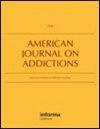Systematic review and meta-analysis: Combining transcranial magnetic stimulation or direct current stimulation with pharmacotherapy for treatment of substance use disorders
Abstract
Background and Objectives
Transcranial magnetic stimulation (TMS) and transcranial direct current stimulation (tDCS) have evidence for their potential in the treatment of substance use disorders (SUD). Medication for addiction treatment (MAT) is underutilized and not always effective. We identified randomized controlled trials (RCTs) and case studies that evaluated the effectiveness of TMS or tDCS used concurrently with MAT in SUD treatment.
Methods
A systematic review of published literature following Preferred Reporting Items for Systematic Reviews and Meta-Analyses (PRISMA) guidelines was conducted on 6/1/2023 by a medical librarian. Craving-related scales were extracted for an effect size calculation. The Physiotherapy Evidence Database (PEDro) scale assessed study quality.
Results
Eight studies (7 RCT, 1 case) including 253 individuals were published from 2015 to 2022, 5 of which had available data for meta-analysis. TMS or tDCS combined with MAT significantly reduced craving-related measures relative to sham stimulation (Hedges' g = −0.42, confidence interval: −0.73 to −0.11, p < .01). Opioid use disorder, methadone, and the dorsolateral prefrontal cortex were the most commonly studied SUD, MAT, and target region.
Discussion and Conclusions
Our results show a significant effect; however, is limited by a small number of studies with heterogeneous methodology across intervention methods and SUDs. Additional trials are needed to fully assess the clinical impact and mechanisms of combined brain stimulation and pharmacotherapy. We discuss a possible mechanism for synergism from these treatment combinations.
Scientific Significance
Adds the first systematic review of combination treatment with TMS or tDCS and MAT in SUD patients to the literature and estimates its overall effect size.

 求助内容:
求助内容: 应助结果提醒方式:
应助结果提醒方式:


